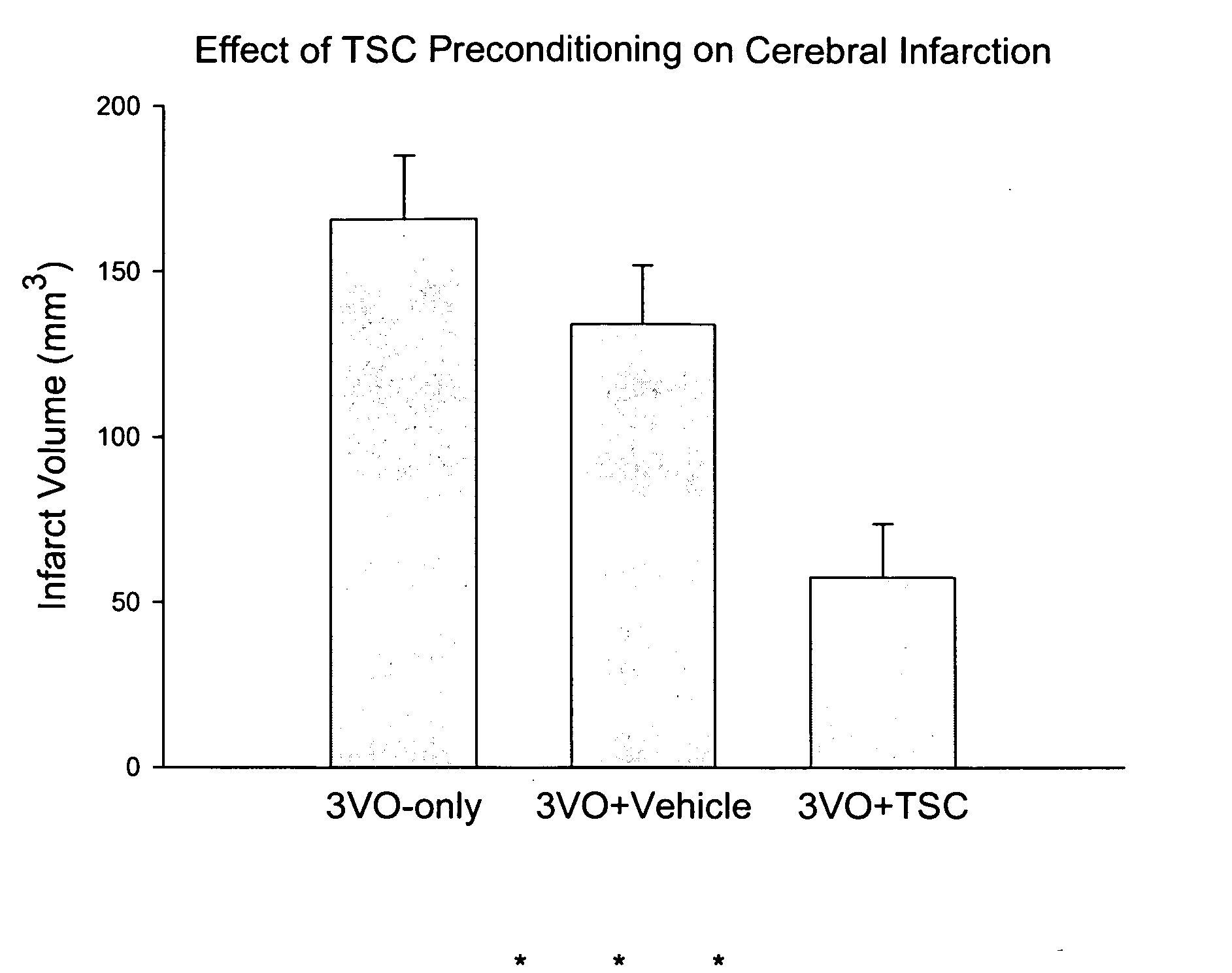Use of bipolar trans carotenoids as a pretreatment and in the treatment of peripheral vascular disease
a carotenoids and bipolar trans technology, applied in the field of peripheral vascular disease treatment, can solve the problems of increasing pain in the legs (claudication), affecting the function of the body, etc., and achieve the effect of reducing the formation of atherosclerotic plaque and preventing or reducing damag
- Summary
- Abstract
- Description
- Claims
- Application Information
AI Technical Summary
Benefits of technology
Problems solved by technology
Method used
Image
Examples
example 1
TSC Causes Increase in the TCOM Reading
[0119]For the rat TCOM studies, male Sprague-Dawley rats were used which weighed between 350 and 400 grams each. TCOM electrodes are attached to humans on the chest, on the leg, or on the top of the foot. Using a TCOM apparatus (Radiometer), the electrodes were attached to the shaven skin in the areas of the chest, the abdomen, and the thigh of the rats. Pure oxygen was then administered to the rats. The most reproducible results came from the electrode attached near the rat's abdomen, on the left or right side.
[0120]The rats were anesthetized (to quiet them) using IP injections of 80 mg / kg ketamine and 10 mg / kg xylazine.
[0121]After the animals were asleep, the abdomen area of the rat was shaved and the TCOM electrode collar was attached to that area. Using Dow Corning high vacuum silicone grease between the electrode collar and the skin was helpful in maintaining a good seal on the rat's skin.
[0122]After attaching the TCOM probe, the transcuta...
example 2
Ischemic Tolerance Induced by Trans-Sodium Crocetinate in Focal Cerebral Ischemic Model
[0123]Trans-sodium crocetinate (0.091 mg / kg total dosage) or vehicle was administered intravenously as follows 1) 0.1 ml injection 2) continuous infusion of TSC at a rate of 0.01 ml / min for the next 60 minutes, and 3) a final 0.1 ml injection of TSC 30 minutes after the cessation of continuous infusion. Twenty-four hours later, the animals were subjected to a transient period of ischemia (120 minutes) by occluding simultaneously both common carotid arteries (CCA) and the middle cerebral artery (MCA). Infarction volumes were measured 24 hours after the ischemic event.
[0124]The effects of TSC on focal ischemic injury were examined using adult male Sprague-Dawley rats, each of which weighed between 330 and 370 g. All procedures were approved by the University of Virginia Animal Care Committee. The animals were initially anesthetized in a chamber with a mixture of 4% halothane in oxygen gases. After b...
PUM
| Property | Measurement | Unit |
|---|---|---|
| time | aaaaa | aaaaa |
| time | aaaaa | aaaaa |
| visible wave length | aaaaa | aaaaa |
Abstract
Description
Claims
Application Information
 Login to View More
Login to View More - R&D
- Intellectual Property
- Life Sciences
- Materials
- Tech Scout
- Unparalleled Data Quality
- Higher Quality Content
- 60% Fewer Hallucinations
Browse by: Latest US Patents, China's latest patents, Technical Efficacy Thesaurus, Application Domain, Technology Topic, Popular Technical Reports.
© 2025 PatSnap. All rights reserved.Legal|Privacy policy|Modern Slavery Act Transparency Statement|Sitemap|About US| Contact US: help@patsnap.com


